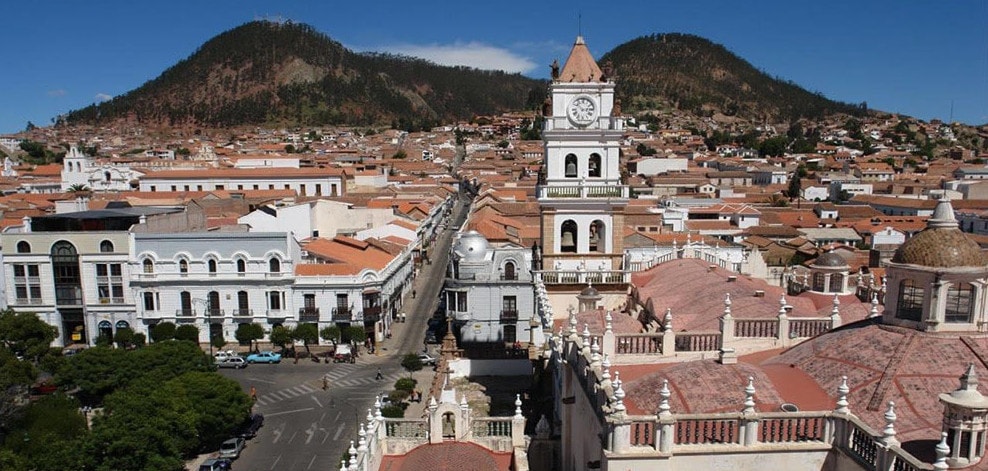
I live in Sucre, Bolivia, on a cobblestone street in an antique house painted white. From the stone steps of my front door I can stroll to the Plaza 25 de mayo, all along the way greeting my neighbors and arriving to buy the local newspapers at a kiosk in front of the glorious achievement of 17th century architecture, La Casa de Libertad.
It is in this building that the first congress met in 1825 to establish the Republic of Bolivar (after the great South American liberator, Simon Bolivar) following their victory of independence from Spanish rule. Yes, you got it: Sucre is very much about history; the past is about as near to sacred as you can get. Sacred not just in remembrance of historical events and people, but also in how folks still live.
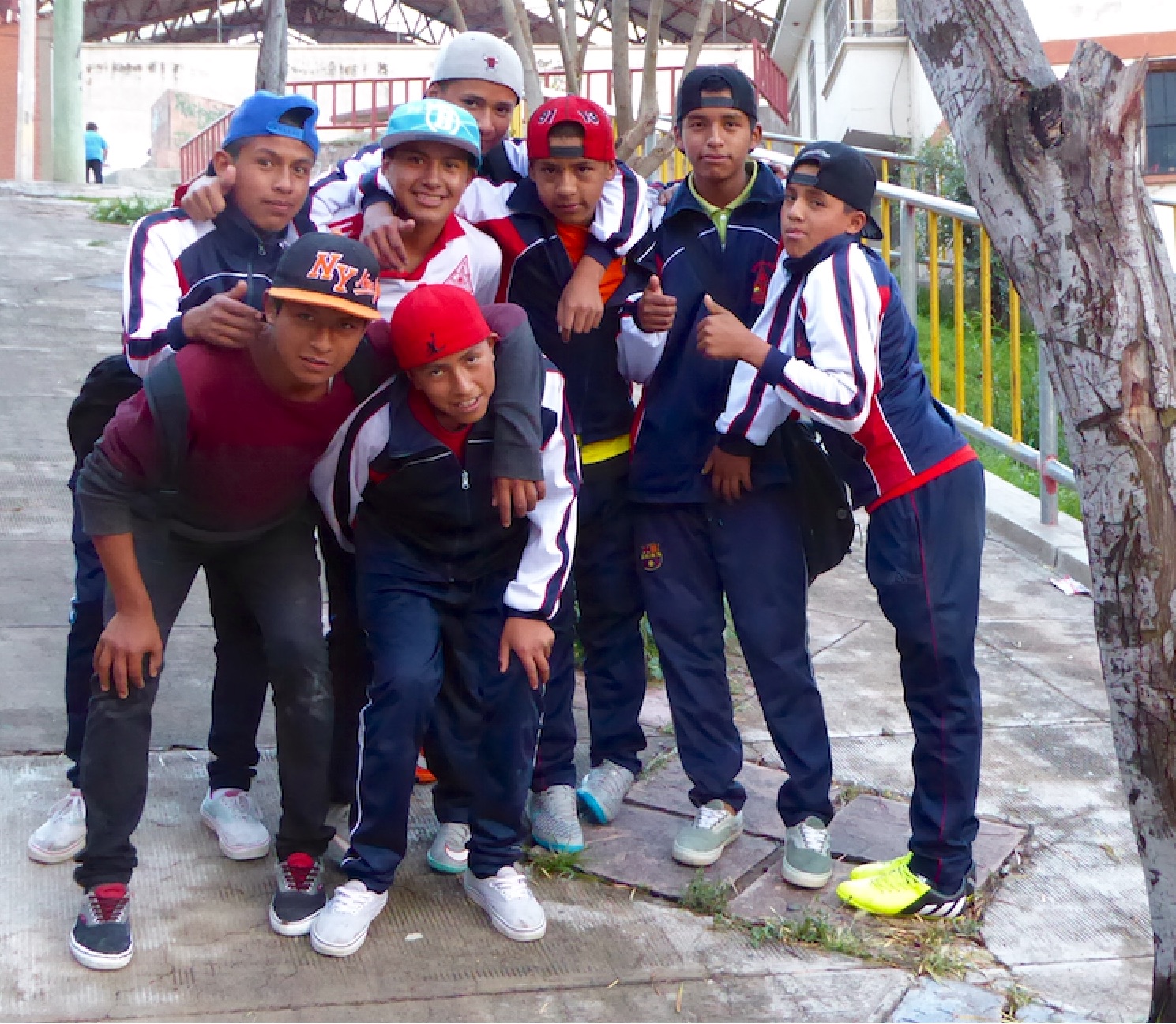
Shoes and the man . . . on the way home from school, boys go into a huddle for a photo op.
It is known as La Ciudad de Cuatro Nombres, The City of Four Names, which, if studied, offer a brief guide to its origins:
1 Chuquisaca, a mispronunciation of the earlier Native settlement, Charcas, that long preceded the arrival of the Spanish;
2 La Plata, the word for cash in the form of silver. The Spanish settlement was founded around 1538-1540 by the wealthy mining executives who were routing the Cerro Rico for tin, silver, and gold in La Villa Imperial de Potosí — and who found that that high-mountain plain was just too frosty for their pampered bones;
3 La Ciudad Blanca, The White City, as they built elegant churches of adobe and stone on practically every block, plus fine houses finished in pure white limestone and boasting multiple courtyards as an antidote to the filth of digging tunnels under the Madre Tierra/Mother Earth; and
4 Sucre, in honor of the second president of the Republic, Antonio José de Sucre.
Perhaps needless to point out, with this recent description of what was La Ciudad de Cuatro Nombres, there were suddenly five names.
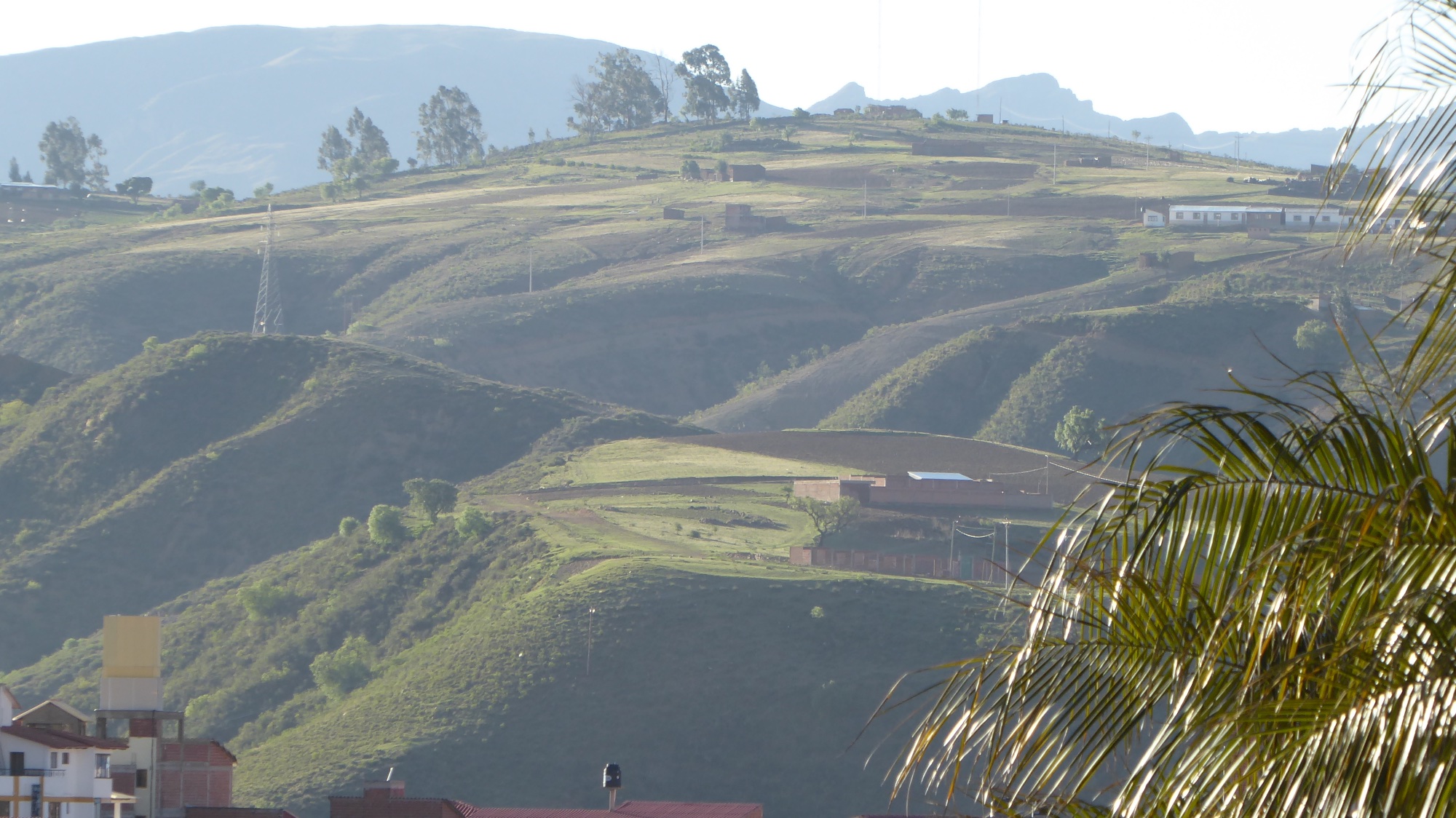
Let's talk about the person who created the images for this essay. A photographer — and he who you know as the founder, editor and chief bottle washer of this publication — ventured south of his native Toronto to take refuge so he could write and make a video interview. It was October 2015, our south-of-the-equator springtime. As spiritual hostess of the trip, little did I know that at night Whitney would take long walks, camera discreetly in the palm of his hand, ever ready to capture the sights.
But did he photograph the typical tourist shots of Sucre's valued heritage? La Casa de Libertad? La Plaza 25 de mayo? El Parque Bolívar? Not on your life. No, he shot what he was interested in — people in their ambiances — capturing a Sucre that few others see.
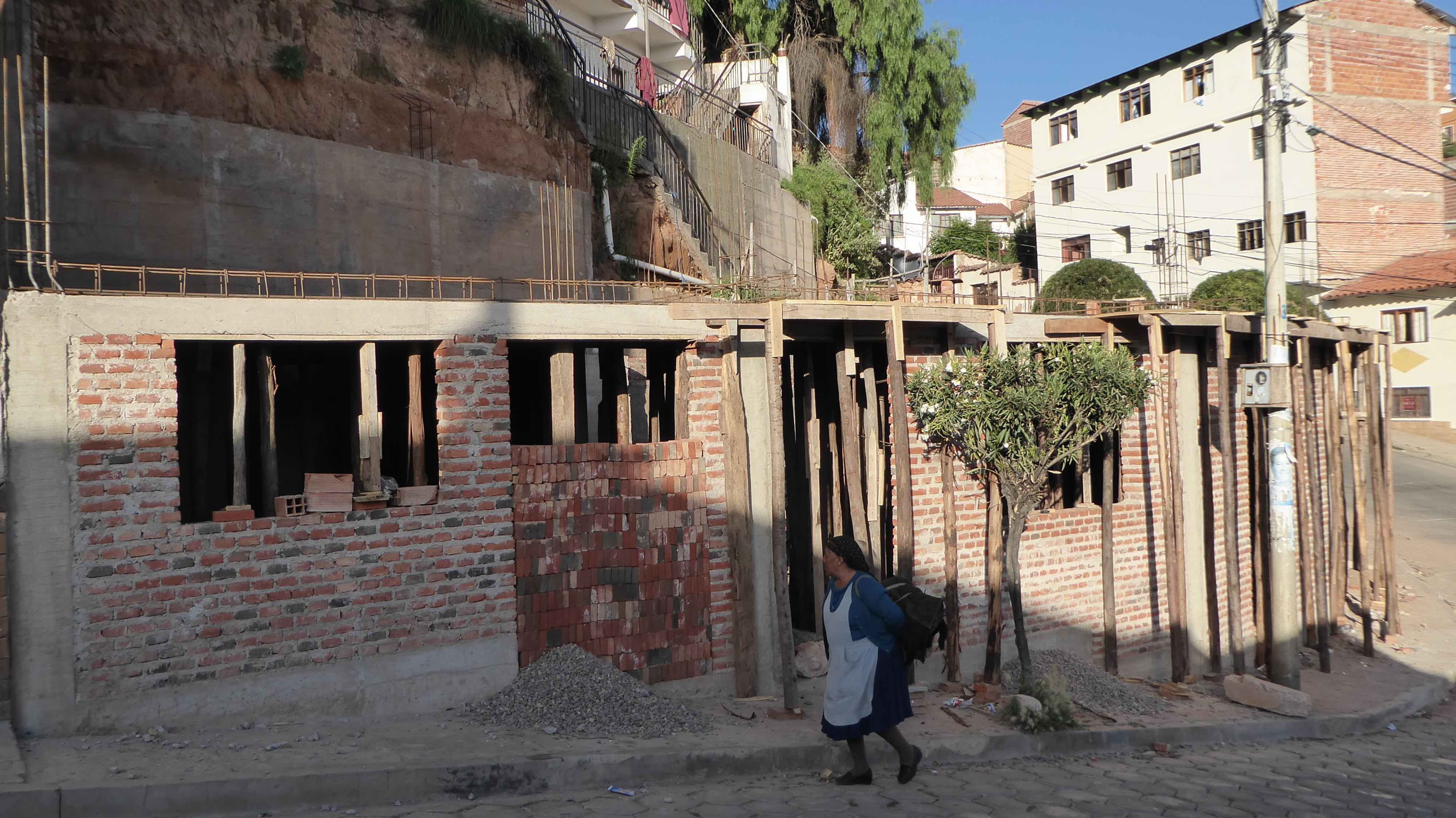
Ingenuity and resourcefulness are always on call . . . why buy something when you can source it yourself?
I'd like to reveal some socio-economic facts about Bolivia. It's the poorest country in South America and, after Haiti, the second poorest in Latin America. Although some sucrenses/folks from Sucre attempt to maintain its reputation as a city for the likes of upper-class folk and the new rising middle class, since the heyday of mining it has fallen on hard times. I've been inside many of the houses in my barrio/neighborhood; they may look elegant from the street, yet inside their inheritors have not had the plata/silver to keep them up as they once were.
Though from different cultural backgrounds and blood lines, campesinos recreated what they knew by nurturing community ties and caring for each other.
That's putting it gently. In many cases adobe walls are disintegrating into dust and landing in piles on rickety, termite-gnawed wood floors; what repairs have been attempted are made with cheap sheets of plastic, factory-made bricks, and concrete. Sadly, other cities like La Paz and Cochabamba have already lost the bulk of their patrimonial heritage to new, often high-rise buildings constructed as business investments. And Sucre seems to be following suit.
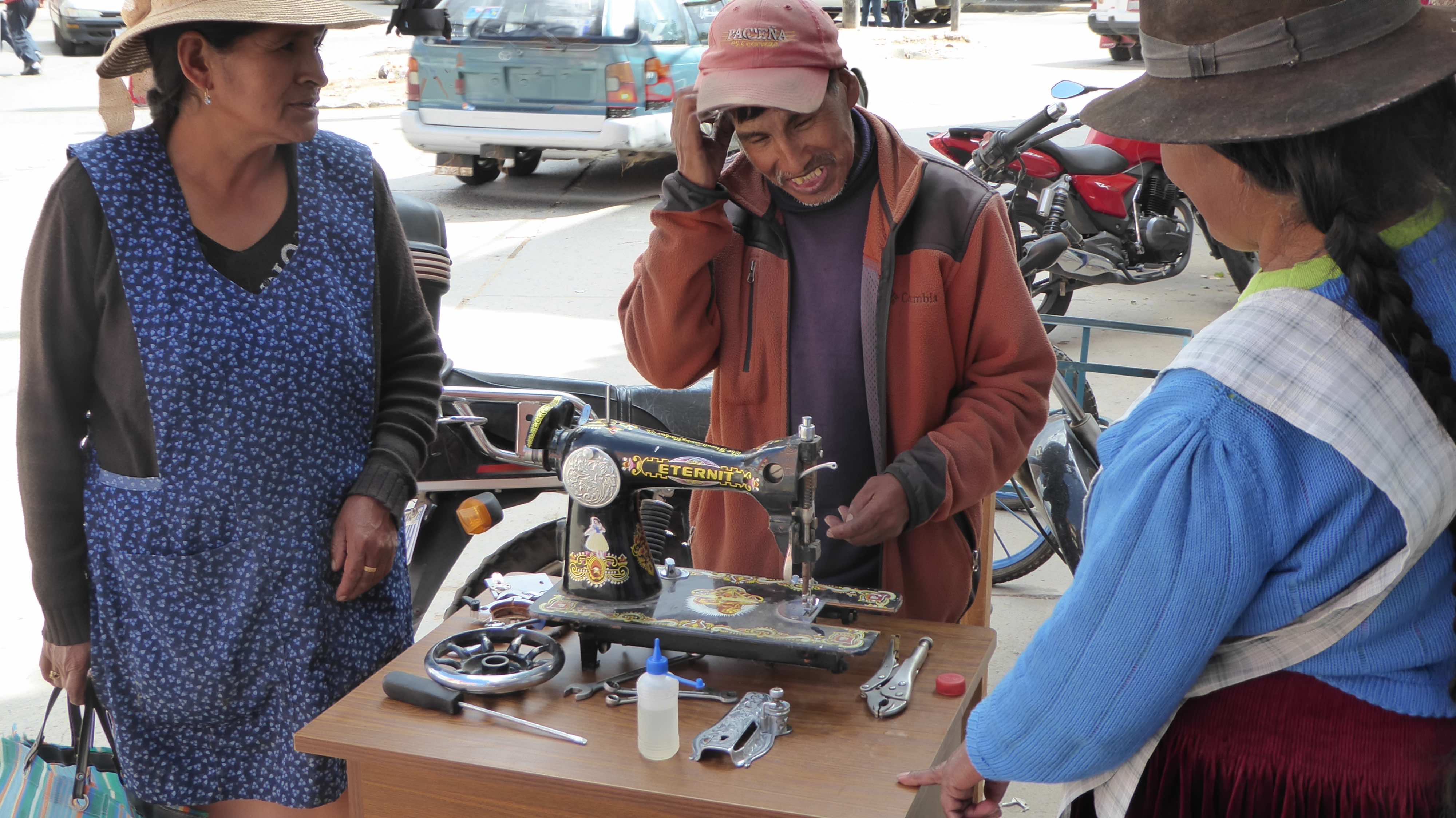
A man repairs an ancient sewing machine in the street. And,
in fine Bolivian get-by fashion, a car with no license plate.
The alcaldia/city hall worries we will lose our status as an architectural attraction, and in 2018 it funded and distributed free to every family in the historic center a manual on how to maintain an adobe house. The problem is shared in many Latin American cities. In Mexican culture, a historic district is called pueblo mágico/magic town, but when it loses its visible heritage, not only do tourists forego coming to look, the municipal tax breaks for those who do keep their houses painted white and in good shape are lost as well.
Meanwhile, in these times when have-and-have-not class society reigns and the global cash economy compels citizens to no longer raise chickens and fish or hunt, but to work in whatever they can find to earn cash, a can-do survival attitude arises. The upshot is that traditional ways live on, now in a different environment. When I rented a room in a residential hotel in the heart of Cochabamba, I was surprised — and not surprised — to see that urban campesinos/farmers recreated what they knew by nurturing community ties and caring for each other, even though they hailed from different ecologies, cultural backgrounds, and blood lines.
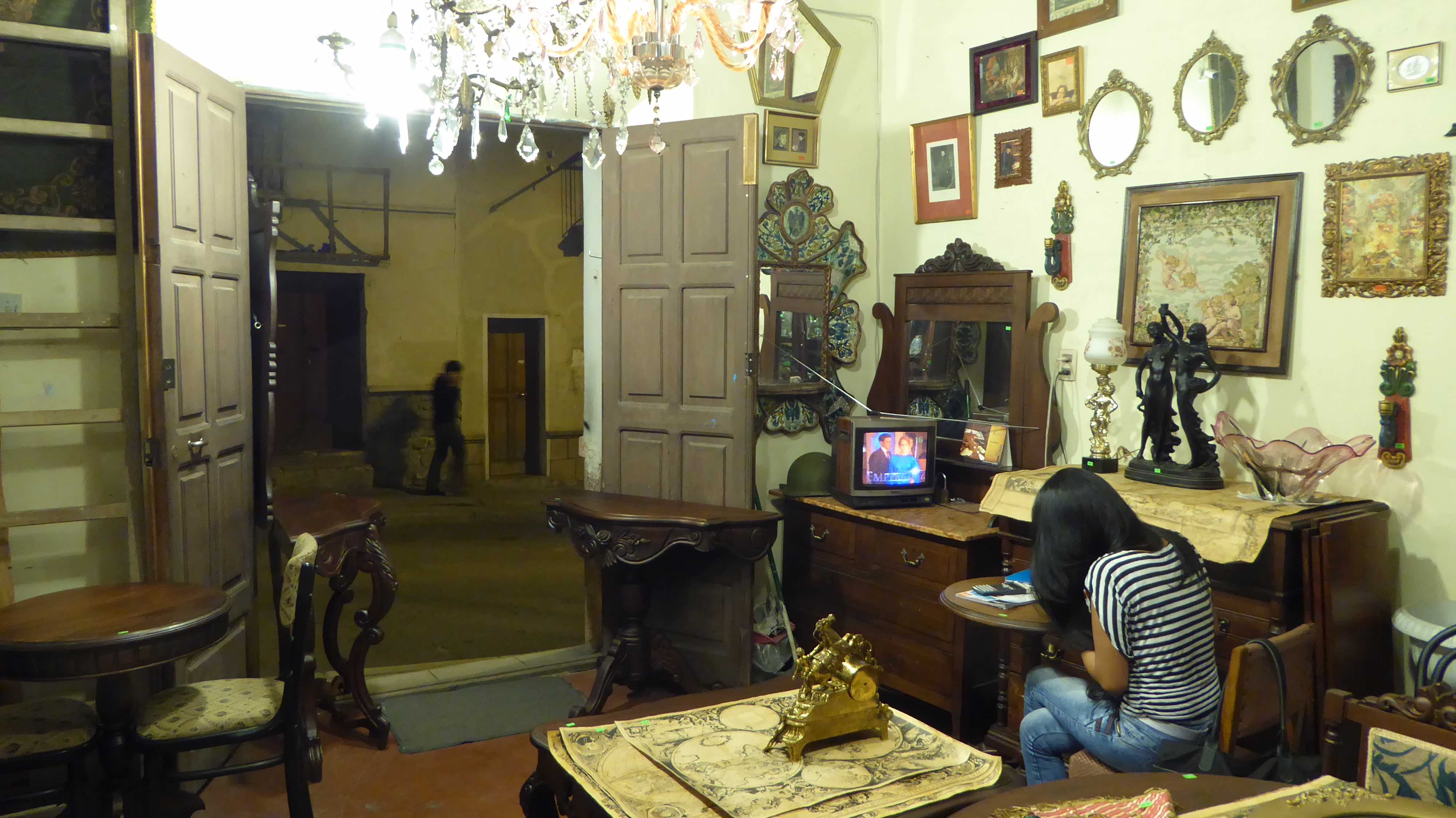
Antique and used furniture abound in Sucre . . . as do hardware, second-hand
and remainder clothing stands in the mercado campesino/farmer's market.
Life is far more decentralized than in developed countries where, with the push of a few buttons you can pay your car insurance, investigate a medical condition, or order a new dress. While a decentralized life means one spends more time getting things done, the trade-off is worth contemplating. There are marvelous friendships to be had in the streets, in the plazas, in cafés: the folks selling newspapers from corner kiosks who, if I'm late, know to save me Sunday's newspaper flown in that day from La Paz; the cholita/urban indigenous woman who sells organic vegetables and eggs directly from the farm; the policeman who guards the bank talks to me about what it's like to be a cop; and the waitress at El Germen/the seed knows what I'm going to order and might even bring it to my table before I say the words.
Bolivia: it's a dream-come-true for small-is-beautiful advocates, bioregionalists, and community activists!
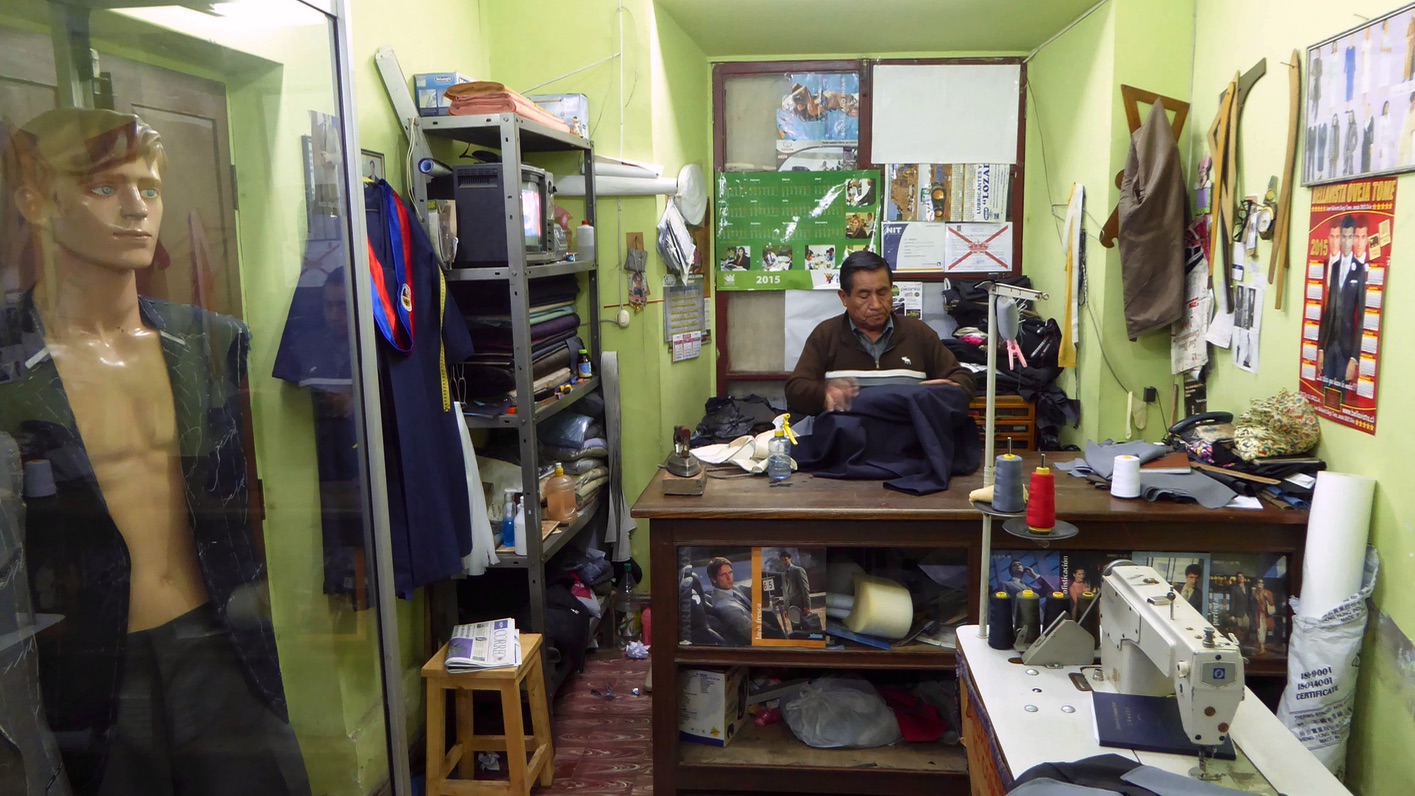
Yes, Bolivia is “a nation of shopkeepers.” A sastre/tailor works into the evening
hours while an odd and silent blue-eyed stranger models a suit-in-progress.
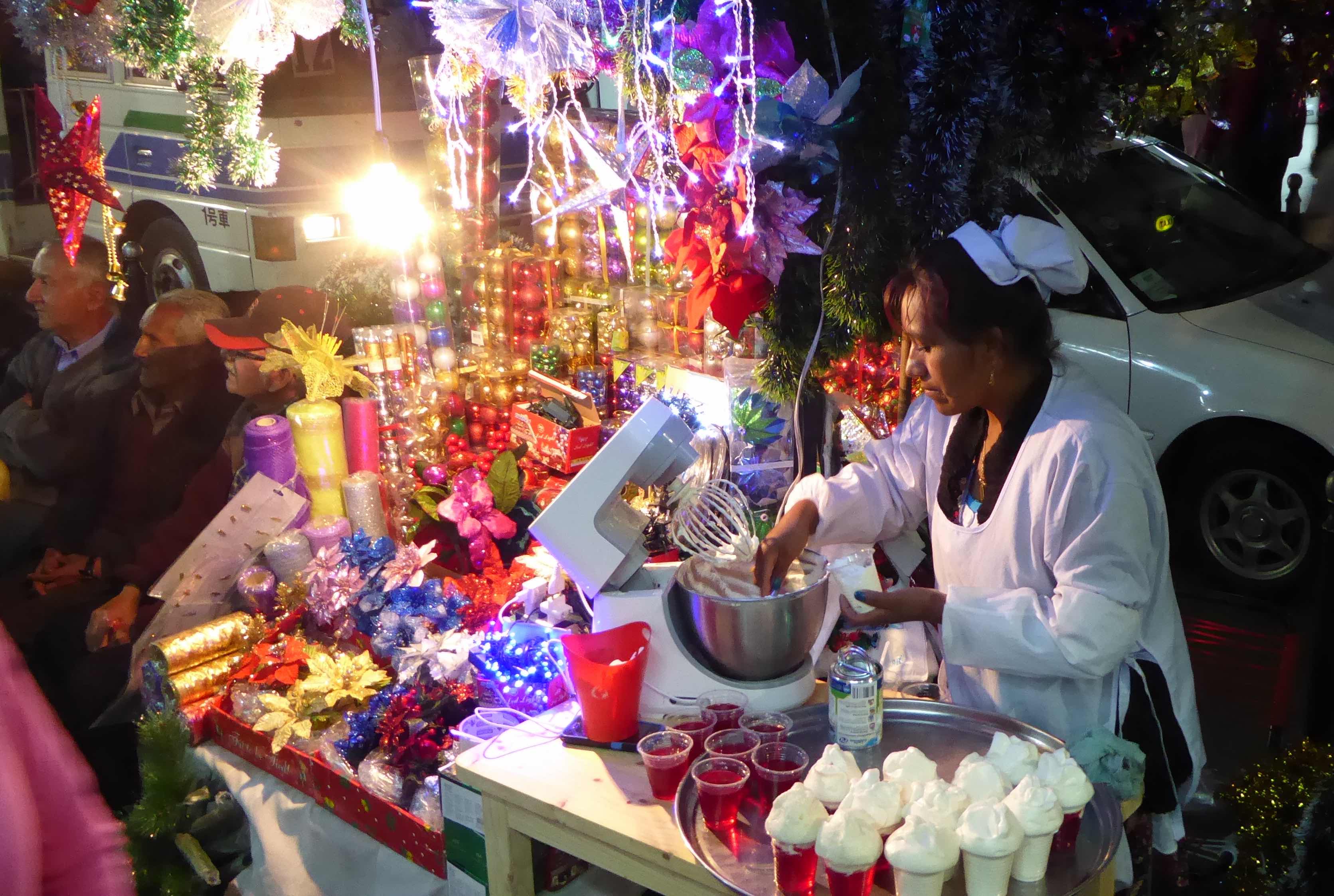
Un poco de todo/a little of everything can work wonders for sales. You can
even purchase a religious article alongside a whipped cream-Jello treat.

Nature puts down roots in the strangest places . . .
Like Bolivians, plant life finds ingenious ways to survive in the city.
The cross currents of love of futbol/soccer with little money to spend on sports make for some creative inventions. I've seen kids playing in the street with a rumpled wad of paper for a ball.
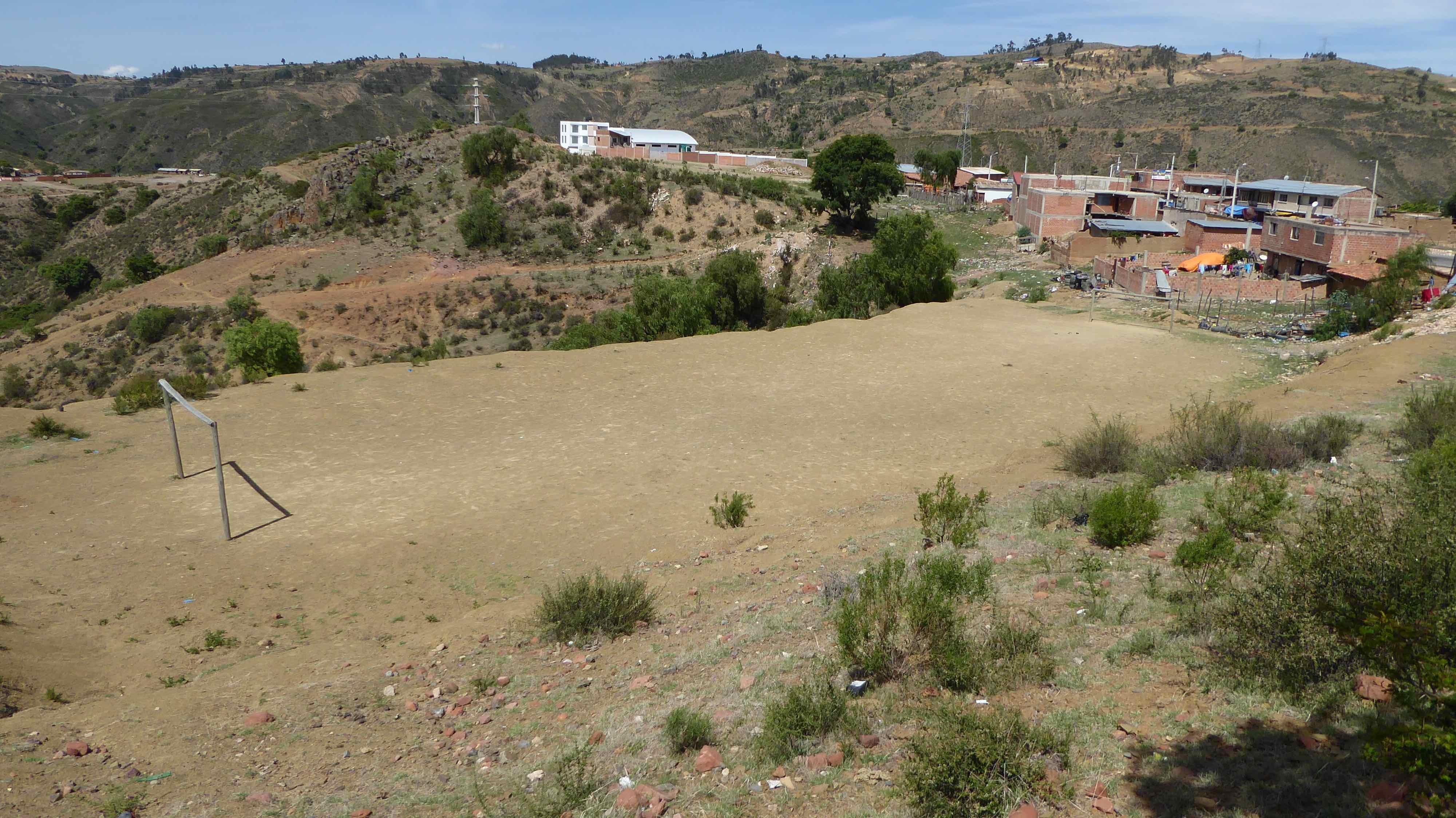
Soccer Field 1. Created by the neighbors of a rural barrio/'hood at the . . . GASP!
. . . a field at the edge of a cliff. How many balls (or players) have they lost?
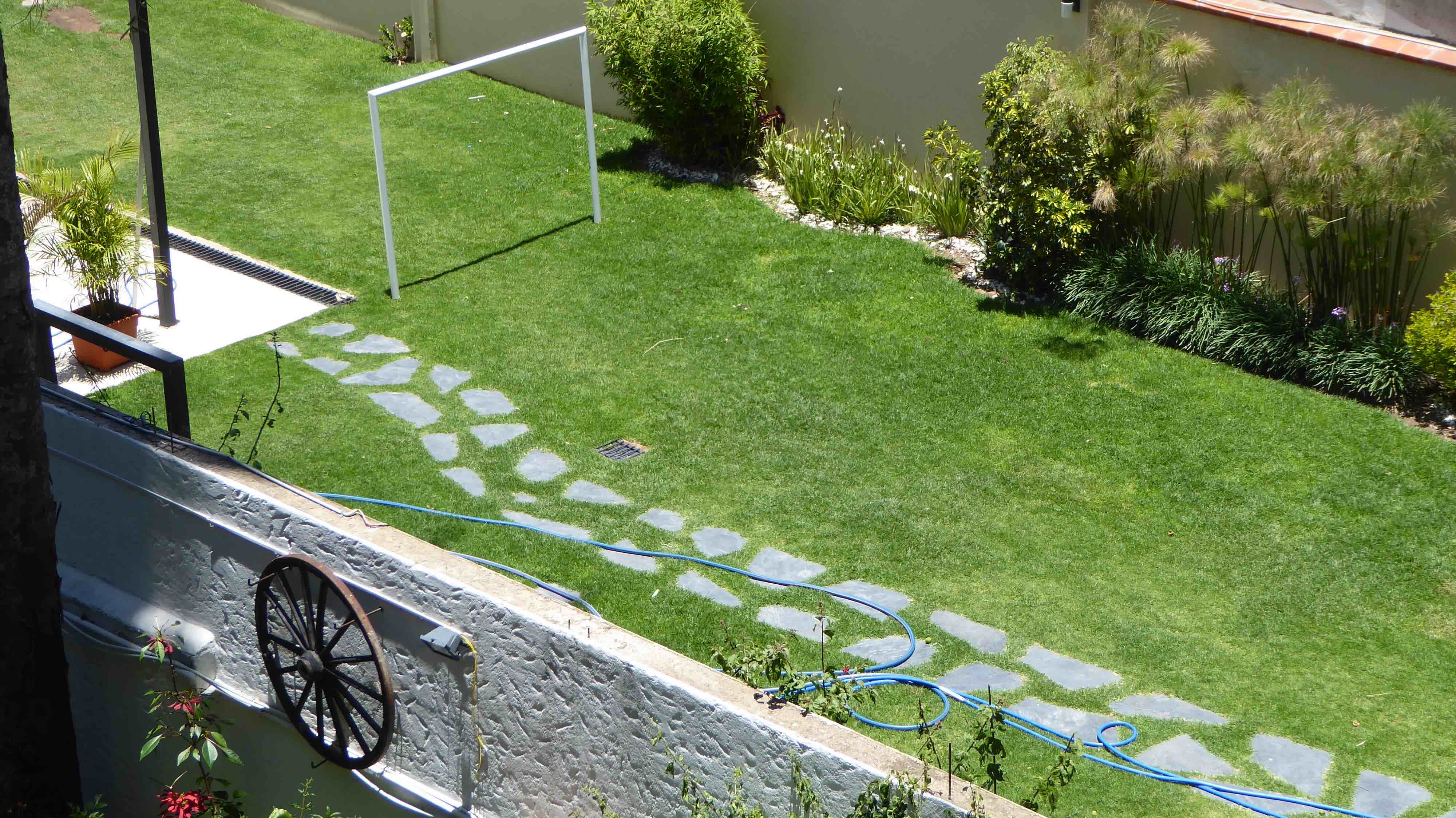
Soccer Field 2. Kept yard with natural rolled-out grass. Synthetic
turf is highly valued in Bolivia; the government brags about its use.
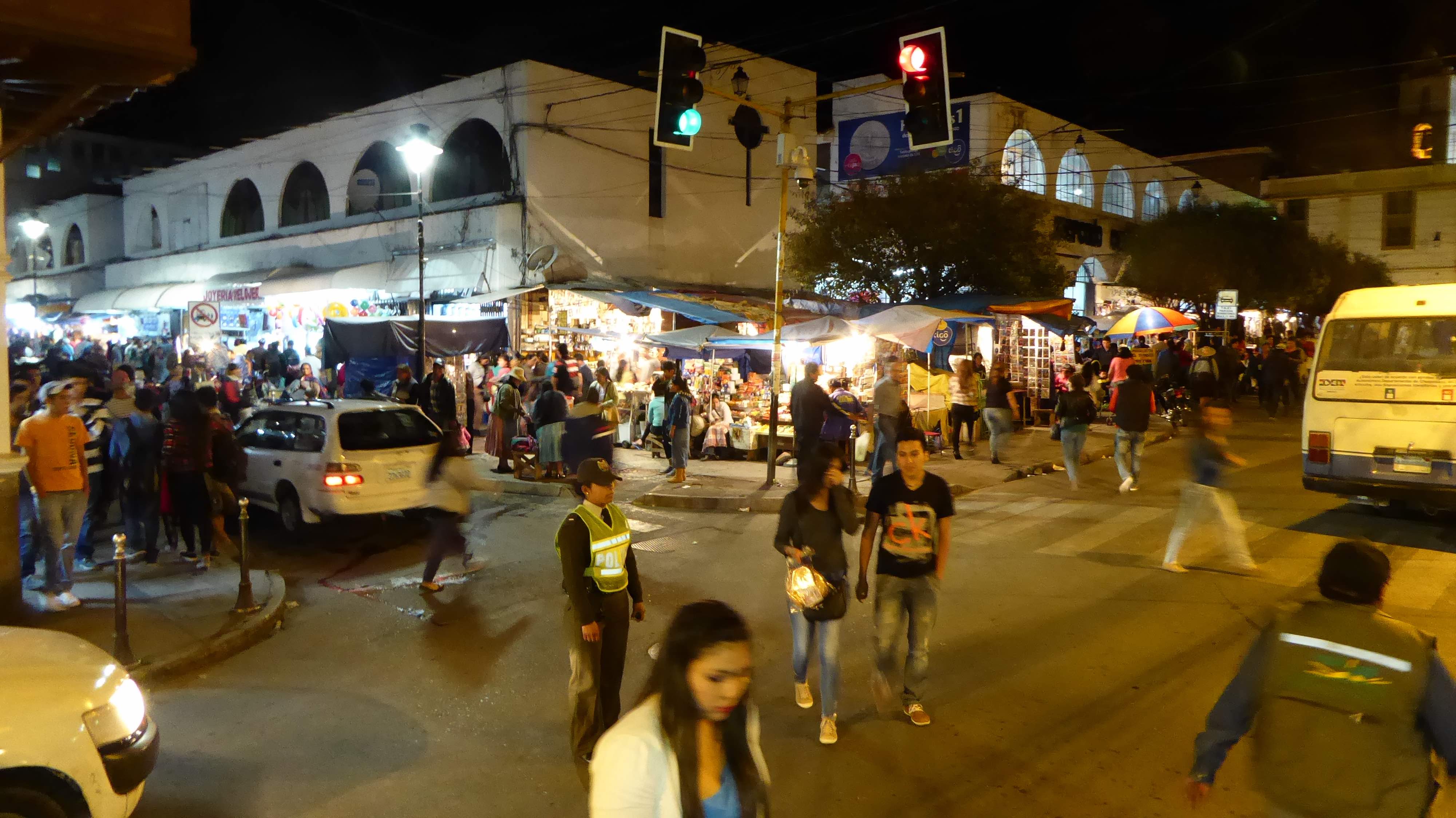
Except for cars and taxis buzzing about, in the day the streets of Sucre are peaceful.
But at night they come alive — as if everyone wants to be out where the action is.
And music, fabulous music: everywhere you see people carrying their acoustic guitars, their zampoñas/flutes of reeds, their violins, their charangos/small, ten-string guitars crafted in Bolivia. When, concerned for the hardships, my friends in the United States beg me to come back north, I think, “How could anyone possibly live in a place that doesn't have brass bands marching through the streets at all hours day and night?”
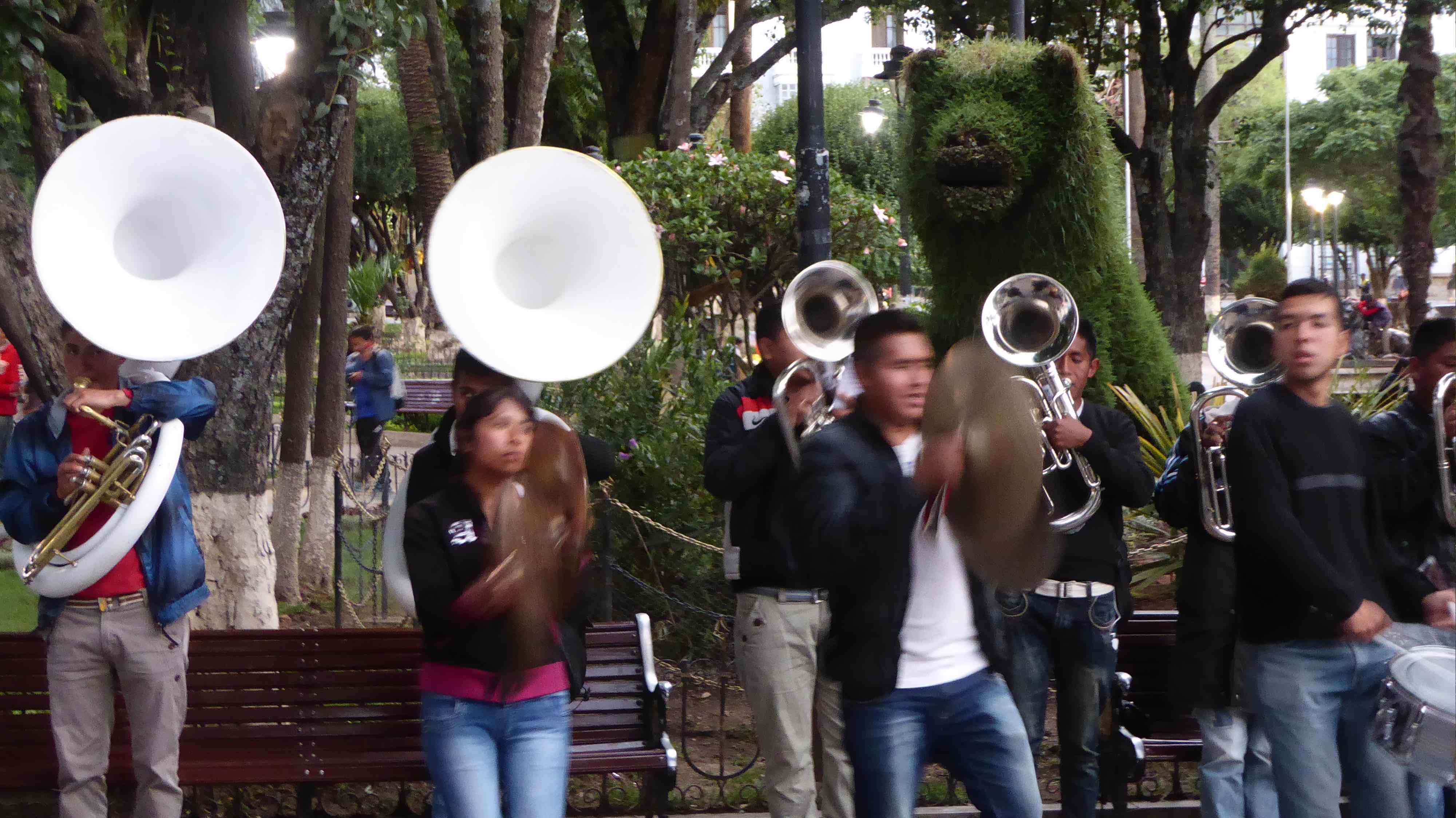
Marching bands appear at the drop of a sheet of music, with their resolute trumpet tunes and cymbals piercing the
altiplano/upland air — giving a kick to the nervous systems of all within earshot. Note the plaza's beloved vegi-lion in background.
Sucre is surrounded by gentle hills and, in the distance, seemingly endless mounds and medium-size mountains. Living in the southernmost Andes at 9200 feet, we are close to a towering azure sky that constantly shows off by means of extravagantly white cumulus clouds, dazzling orange and pink sunsets, and thunder storms with rousing flashes of lightning. Taxistas/cab drivers like to brag that the climate is the best: a cross between hot Cochabamba, the city of eternal spring where one can swim outdoors all year round, and frigid La Paz that lies at the foot of the ancient glacier Illimani. The temperature here ranges from 45 -75º Fahrenheit/ 7-23º Celsius, más o menos. ≈ç
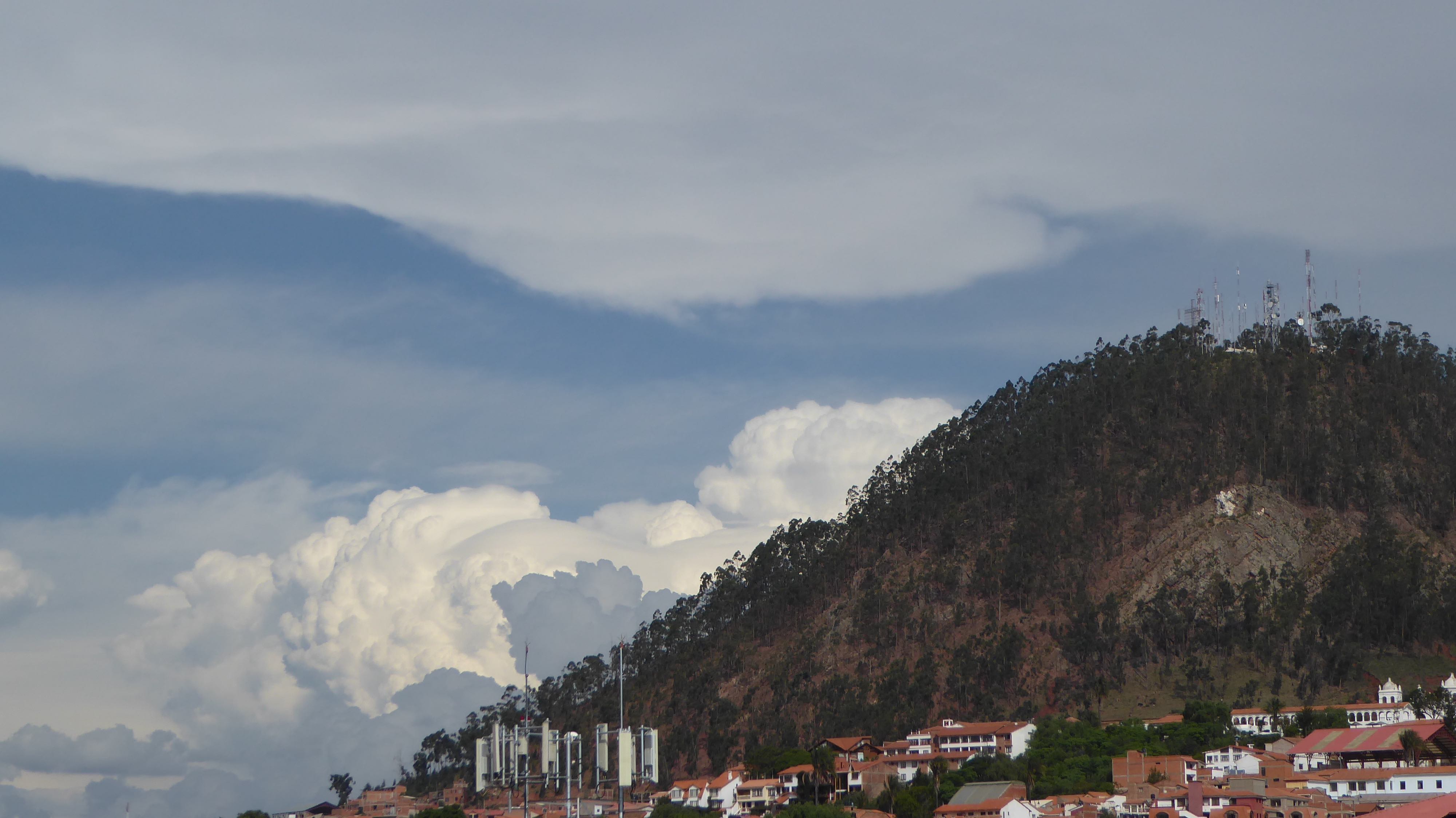
Situated in the Andes at an altitude of 9200 ft, the sky offers great beauty and
occasional very dramatic weather. The climate is defined as 'subtropical highland'.
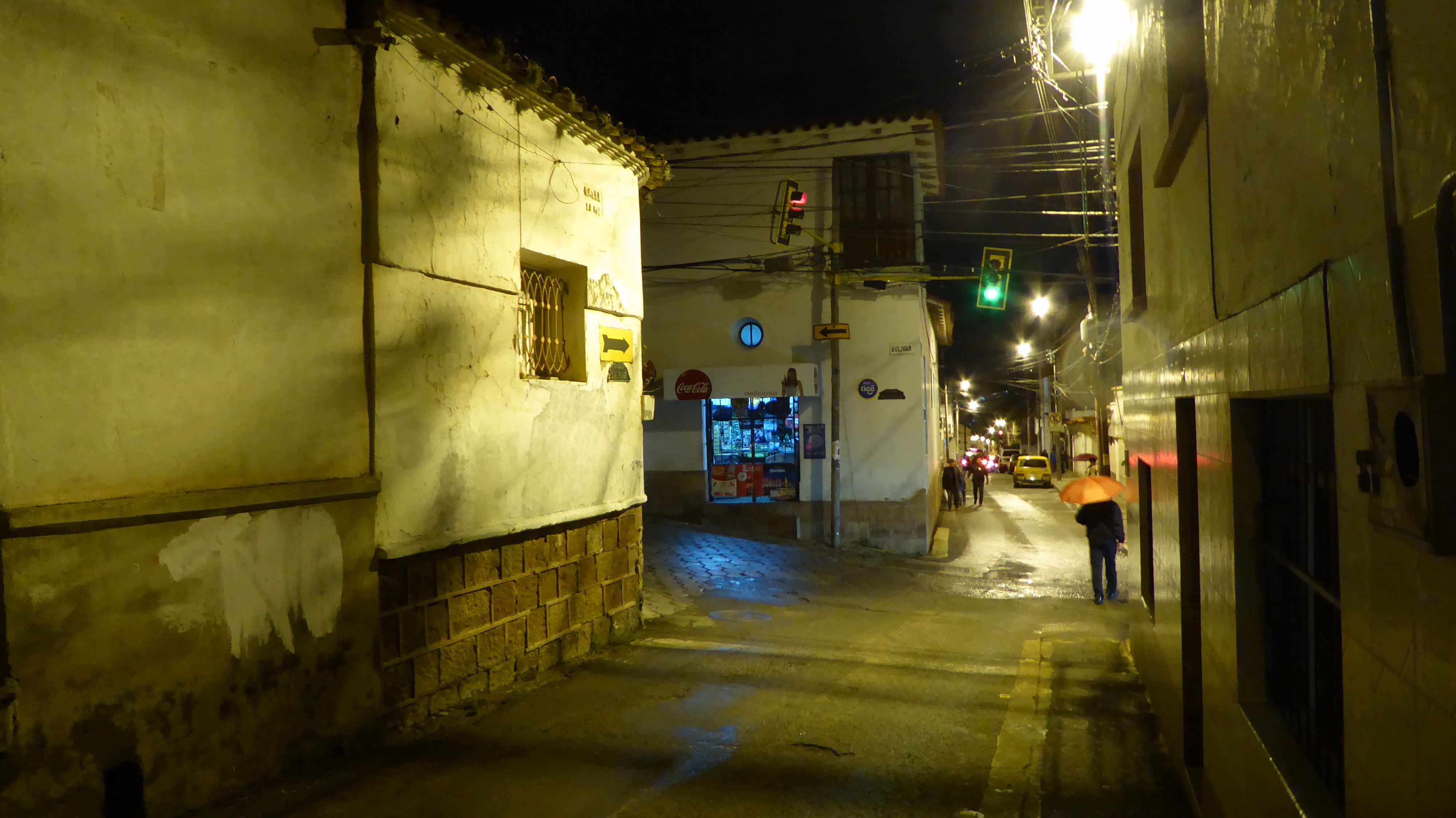
The photographer reported that he never felt apprehensive about wandering Sucre's streets at night, as I've heard women and
children say as well. "The Bolivians keep to their business," he said, "yet also seem charmed by the prospect of meeting a foreigner."

CHELLIS GLENDINNING is The Journal of Wild Culture's Editor-on-the-Lam. She is the author of hundreds of essays, a bilingual opera, and nine books, including her first novel and first book published in Spanish in Bolivia, Objetos (La Paz: Editorial 3600 ) and a generational memoir released last month, In the Company of Rebels (New York: New Village Press). www.chellisglendinning.org
WHITNEY SMITH is the Publisher/Editor of The Journal of Wild Culture.

Comments
Que linda, muy interesante!
Que linda, muy interesante!
Add new comment